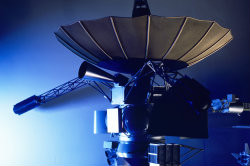From Galileo to multi-system positioning
The European Galileo has already established ramp-up plans, the United States' Global Positioning System (GPS) is under modernisation, and the Russian Global Navigation Satellite System (GLONASS) is being restored. In addition, there are the European Geostationary Navigation Overlay Service (EGNOS) and the Wide Area Augmentation System (WAAS). All these together set challenges to the design of positioning receivers that have to cope with multiple frequencies, message protocols and system parameters. In this context of demanding technological innovations, the 'Extended-high performance mass market GNSS receiver multi standard ready for market' (E-HIMALAYA) project was initiated. An initial research and development phase permitted exploring different directions of improvement of GNSS receiver performance. The receiver is assisted by a communications link to speed up the acquisition and find weak Galileo signals in dense urban areas or indoors. Special emphasis was placed on delivering data from at least two constellations, Galileo and GPS. The E-HIMALAYA partners' assisted-GNSS server was upgraded to support the Secure User Plane Location (SUPL) v2.0 protocol. This is the emerging standard for exchanging information between positioning servers and mobile devices. Its numerous capabilities make it ideal for the next generation of location-enabled services. Extensive testing proved that one of the first assisted-Galileo solutions to be developed based on 3rdGeneration Partnership Project (3GPP) assistance standards allows lessening the wait to calculate the user's position, the so-called time-to-first-fix. The test results will be shared with 3GPP to contribute to future improvements in its standards. Next, E-HIMALAYA focused on hybridisation of the assisted-GNSS receiver with other technologies. The ready-to-market prototype includes high-performance microelectromechanical system sensors, including an accelerometer and gyroscopes. In addition, a spoofing detector allows further enhancing the precision and accuracy of positioning. The performance of hybridisation and spoofing detection algorithms will be assessed using real signals in harsh environments, such as urban canyons. The assisted-GNSS receiver could be integrated into platforms for mobile and personal devices. Its application will demonstrate the added value of Galileo in real mass-market environments.
Keywords
Galileo, multi-system positioning, satellite-based applications, positioning receivers, GNSS receiver



